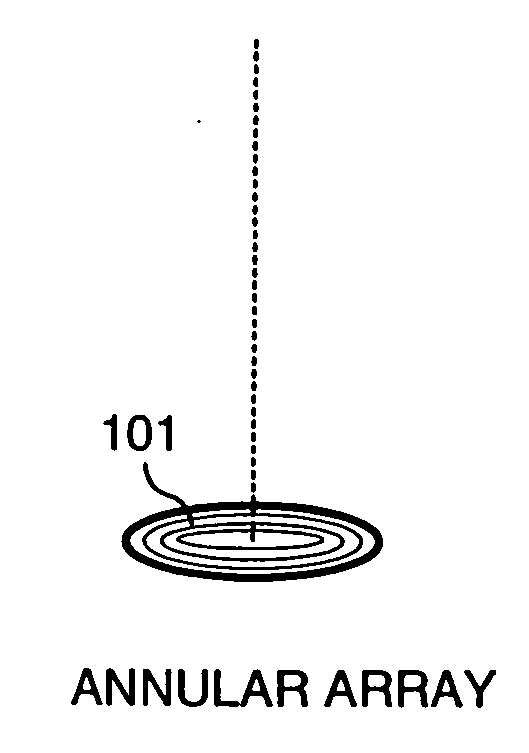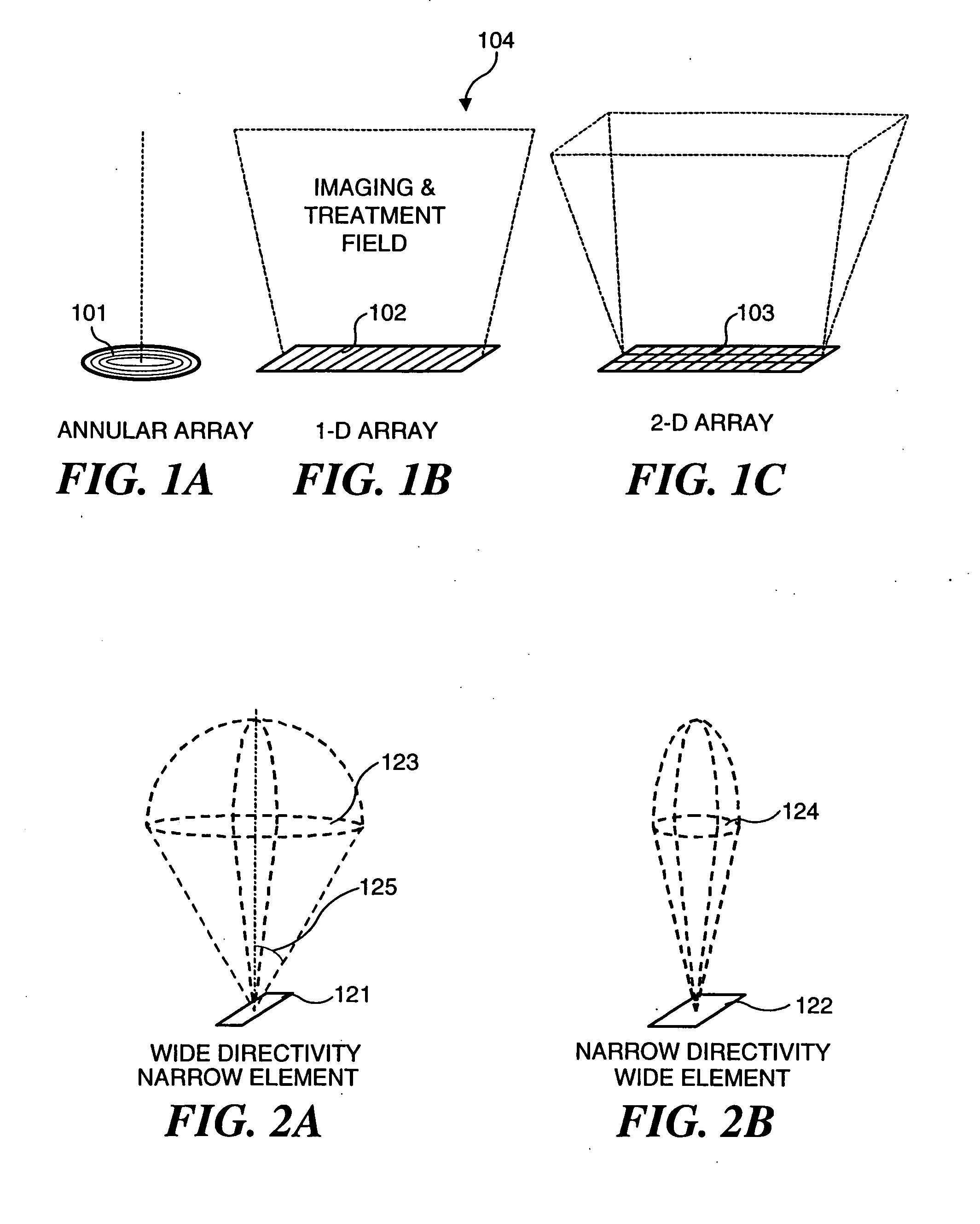Ultrasound transducers for imaging and therapy
- Summary
- Abstract
- Description
- Claims
- Application Information
AI Technical Summary
Benefits of technology
Problems solved by technology
Method used
Image
Examples
Embodiment Construction
[0046] An ultrasound array includes many small transducer elements on its aperture surface, and these transducer elements can be distributed in several different geometric arrangements, as shown in FIGS. 1A-1C. Each transducer element is independently driven by its own electronic circuitry. An annular array (FIG. 1A) includes many coaxial ring elements 101. A one-dimensional (1-D) array (FIG. 1B) includes many elongate row elements 102 arranged side-by-side and extending transversely across the longitudinal axis of the array. A 1½-D or two-dimensional (2-D) array (FIG. 1C) includes a matrix of elements 103 distributed over two dimensions. The 1-D array has the advantage of simplicity and is therefore a preferred configuration for use in the present invention. The same advantages of the invention described herein can also be achieved using 1½-D and 2-D arrays. The 1-D array has a 2-D imaging and treatment field 104, or plane that extends along the longitudinal axis of the array.
[004...
PUM
 Login to View More
Login to View More Abstract
Description
Claims
Application Information
 Login to View More
Login to View More - R&D
- Intellectual Property
- Life Sciences
- Materials
- Tech Scout
- Unparalleled Data Quality
- Higher Quality Content
- 60% Fewer Hallucinations
Browse by: Latest US Patents, China's latest patents, Technical Efficacy Thesaurus, Application Domain, Technology Topic, Popular Technical Reports.
© 2025 PatSnap. All rights reserved.Legal|Privacy policy|Modern Slavery Act Transparency Statement|Sitemap|About US| Contact US: help@patsnap.com



